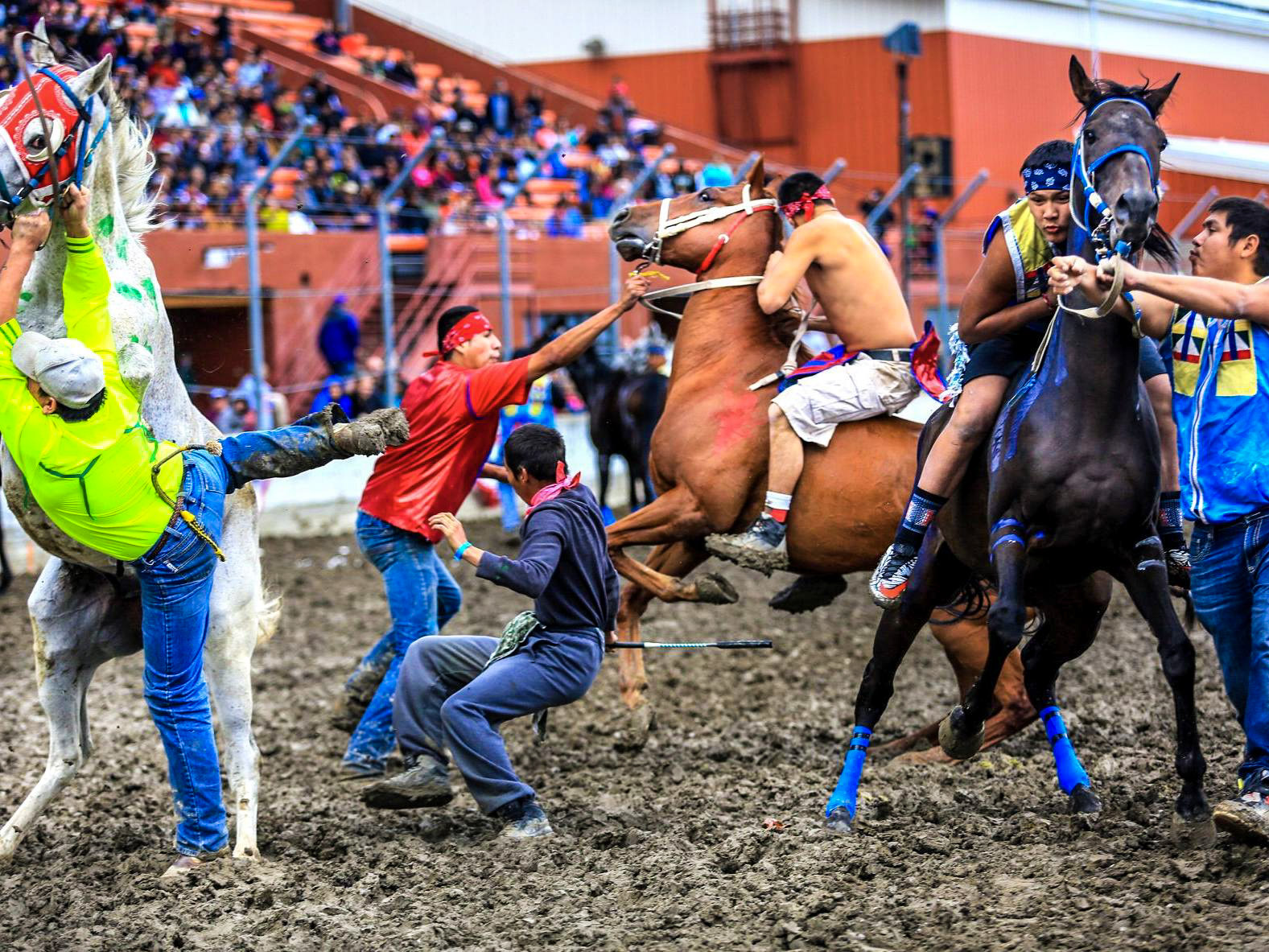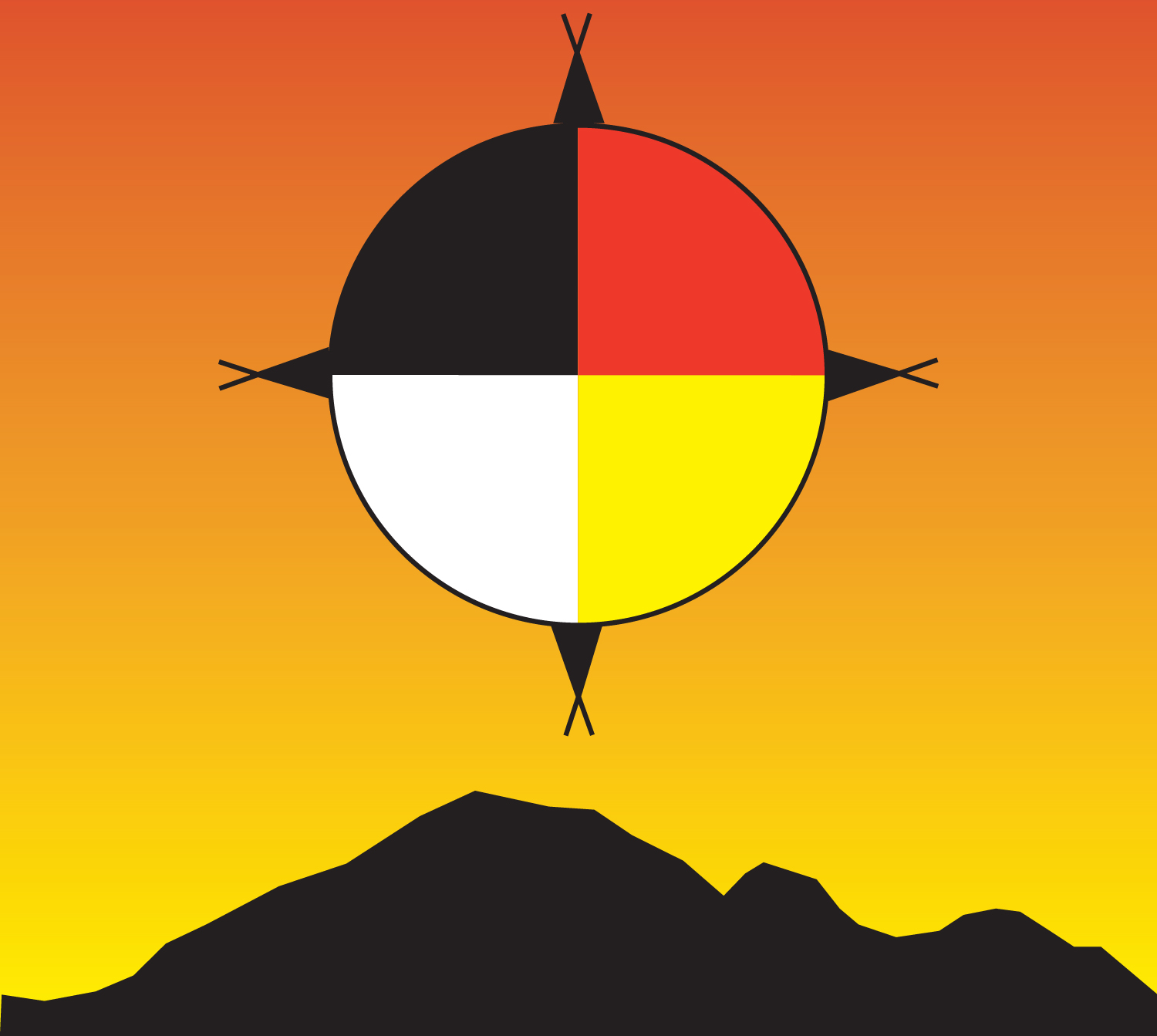Indianz.Com > News > Native Sun News Today: Behind the scenes at Crow Native Days

Indian Relays – Behind the Scenes
Tuesday, July 13, 2021
CROW AGENCY, Montana — June 25th, 2021, marked the annual Crow Native Days, replete with many activities, the highlight perhaps the Indian relay races, a sport gaining immense popularity thrilling audiences across the nation.
Exceptionally talented and popular announcer, Kennard Realbird, Crow, explained that Indian Relay ticket sales have overtaken many western events at the huge Billings Metra Complex, generating more revenue than most events. In 2000, for example Indian Relay gate sales brought in more than the PBR and other rodeos, concerts, and other events, coming in second only to Charlie Pride, a Montana grown country music star.
“Horse racing and gambling on that has been in our blood ever since the first two Indians got horses,” Kennard Realbird remarked. “It’s nothing new, just more organized now.”
NATIVE SUN NEWS TODAY
Support Native media!
Read the rest of the story on Native Sun News Today: Indian Relays – Behind the Scenes
Clara Caufield can be reached at acheyennevoice@gmail.com
Note: Copyright permission Native Sun News Today .
Search
Filed Under
Tags
More Headlines
Native America Calling: The Year in Native News
Native America Calling: Native music in 2025
Native America Calling: Amid Greenland’s independence push, Denmark accounts for colonial blunders
Senate Committee on Indian Affairs sets business meeting and hearing
Native America Calling: Saving historic architecture and other important places
VIDEO: H.R.2400, the Pit River Land Transfer Act of 2025
VIDEO: H.R.3620, the Southcentral Foundation Land Transfer Act of 2025
VIDEO: H.R.2815, the Cape Fox Land Entitlement Finalization Act of 2025
AUDIO: H.R.2400, the Pit River Land Transfer Act of 2025
AUDIO: H.R.3620, the Southcentral Foundation Land Transfer Act of 2025
AUDIO: H.R.2815, the Cape Fox Land Entitlement Finalization Act of 2025
Native America Calling: Native in the Spotlight with Randy Taylor
NAFOA: 5 Things You Need to Know this Week (December 15, 2025)
Chuck Hoskin: Cherokee Nation celebrates milestone in tribal gaming
Native America Calling: A Native entrepreneur’s view of the retail shopping season
More Headlines
Native America Calling: Native music in 2025
Native America Calling: Amid Greenland’s independence push, Denmark accounts for colonial blunders
Senate Committee on Indian Affairs sets business meeting and hearing
Native America Calling: Saving historic architecture and other important places
VIDEO: H.R.2400, the Pit River Land Transfer Act of 2025
VIDEO: H.R.3620, the Southcentral Foundation Land Transfer Act of 2025
VIDEO: H.R.2815, the Cape Fox Land Entitlement Finalization Act of 2025
AUDIO: H.R.2400, the Pit River Land Transfer Act of 2025
AUDIO: H.R.3620, the Southcentral Foundation Land Transfer Act of 2025
AUDIO: H.R.2815, the Cape Fox Land Entitlement Finalization Act of 2025
Native America Calling: Native in the Spotlight with Randy Taylor
NAFOA: 5 Things You Need to Know this Week (December 15, 2025)
Chuck Hoskin: Cherokee Nation celebrates milestone in tribal gaming
Native America Calling: A Native entrepreneur’s view of the retail shopping season
More Headlines
